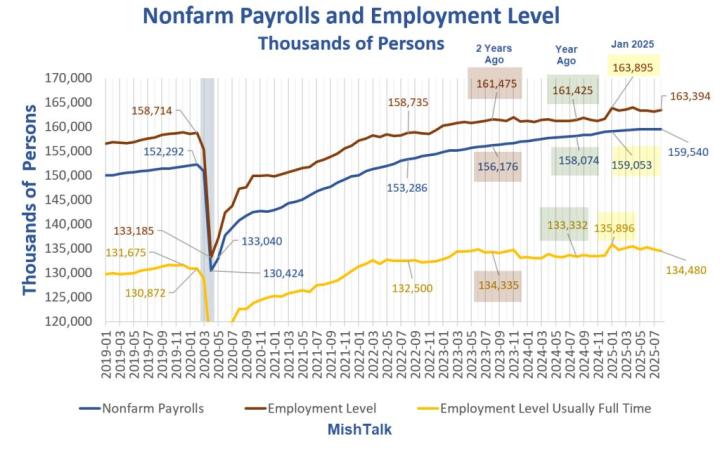Over the past 20 years, with the prosperity of the global travel industry, Web2 travel platforms such as Booking, Airbnb, and Expedia have gradually grown into industry giants. However, their profit logic has always relied on high commissions. For merchants, they are forced to give up 15% -30% commission for each order; while for users, they often unknowingly bear this additional cost.This model brings multiple problems. Merchants' profit margins are severely compressed, and they can only maintain operations by sacrificing pricing flexibility. Users do not form any long-term value after consumption, and travel expenses "stop when they run out". All returns are limited to one-time experiences. More seriously, the platform firmly concentrates profits on itself, and both merchants and users are marginalized, only being "passers-by" of traffic and revenue, unable to truly share the dividends brought by industry growth.This type of model can maintain growth in the short term, but in the long run, it solidifies the profit structure of the tourism industry and makes the entire ecosystem lack Sustainability.
Web3 and RWA: New Opportunities for the Tourism Industry
The development of Web3 and the rise of RWA (real-world asset on-chain) have brought new possibilities to the tourism industry. In the past, although the RWA model of real estate and other real estate gradually matured, there were generally pain points of high participation barriers and poor liquidity. In contrast, tourism assets have natural advantages: high consumption frequency, fast capital turnover speed, and coverage of global users.Coinsidings enters the market based on this logic. By combining technology with financial mechanisms, users' consumption behavior is no longer just an expense, but directly linked to assets. Each booking can be converted into an equity certificate, which then enters the platform's financial system. The introduction of points and option mechanisms makes these consumer rights have the attributes of assetization and financialization. At the same time, relying on the global tourism asset pool, users can not only complete consumption locally, but also realize circulation and dividends globally through the on-chain network.Therefore, Coinsidings is neither a simple travel platform nor a simple asset mapping tool, but an innovative ecosystem that converts tourism consumption into long-term Asset Allocation
Coinsidings' Mechanism Innovation: Closed Loop from Consumption to Revenue
The biggest highlight of Coinsidings 2.0 is that it not only provides a booking entrance, but also builds a complete "consumption-equity-asset-dividend" closed loop.In this closed loop, users' consumption behavior directly becomes an investment entrance. Every booking, whether it is a hotel, resort, transportation, or ticketing, will generate corresponding points and equity mapping. These benefits are not simple rewards, but vouchers for users to enjoy future benefits. In the traditional model, consumption ends here; but in Coinsidings, this is just the beginning of assetization.The membership system provides users with a multi-level value experience. Based on different levels of membership qualifications, users can not only receive consumption discounts, but also enjoy additional benefits such as point gifts and exclusive rights. Points themselves have circulation, deduction, and conversion functions. Users can use them to offset travel expenses or choose to enter the revenue pool to participate in the overall profit distribution of the platform.The option mechanism further enhances flexibility. Unlike traditional tourism real estate, which can only passively hold and wait for returns, users can choose to exit early according to their own needs or wait for longer-term maturity returns. This flexible design can not only amplify potential returns, but also provide the possibility of risk hedging, closely combining investment and consumption.In addition, Coinsidings is not limited to a specific region, but incorporates diverse consumption scenarios such as hotels, resorts, catering, transportation, and tickets into the overall framework through a global tourism asset pool. This enables users to connect their consumption behavior with the global asset network regardless of their country, truly achieving cross-border value distribution.
III. Mutual benefit between users and merchants
Under the traditional tourism model, users are always just tourists, and the only reward they receive is the experience itself. But Coinsidings has changed this and given users a new identity.When a user completes a reservation on the platform, it is not just a consumption transaction, but the beginning of an asset layout. The points and rights corresponding to consumption will continue to be released, bringing wealth growth similar to compound interest. In this way, travel expenses no longer mean zero value, but become part of long-term assets.As time goes by, the more active users become, the more rights they accumulate, and the richer the long-term returns they receive. This change in experience makes users no longer just passers-by on the platform, but true partners. Coinsidings integrates users' travel experience with asset growth, creating a new model of "consumption is investment".For merchants, Coinsidings also brings disruptive value. In the past, the profit model of hotels or homestays was highly dependent on room fee income and was greatly compressed by platform commissions. On Coinsidings, merchants are no longer subject to high commissions. The decentralized operation method directly reduces costs by nearly half, allowing more profits to return to the merchants themselves.More importantly, as users increase their booking frequency due to asset returns, merchants not only increase the number of orders, but also gain higher customer stickiness. Consumers choose to repurchase more because of future profits, which is an unprecedented growth opportunity for merchants. At the same time, merchants' income is no longer limited to the room rate itself. They can also share the additional returns brought by the growth of the platform through points and equity distribution.This means that merchants are upgrading from a single business logic to a dual logic of "operation + investment". They are both service providers and participants in the asset network.
Transformation of Industry Profit Model: Platform Revenue Sharing
The core significance of Coinsidings is not only to enable users and merchants to obtain more profits, but also to promote the transformation of the profit model of the entire industry.Under the traditional model, profits are almost entirely concentrated on the platform, and users and merchants can only passively accept the rules. However, under the Coinsidings model, profits are redistributed through points, options, and global asset pools, allowing the platform's growth to truly benefit users and merchants. In other words, this is a decentralized profit redistribution model that enables the value of the tourism industry to be built, shared, and win-win.The potential impact of this model is huge. Once both users and merchants can benefit from the growth of the platform, the industry will form a virtuous cycle. Users are more willing to participate, merchants are more actively cooperating, and the platform obtains long-term stable development through ecosystem prosperity.The ultimate goal of Coinsidings is not just to put tourism assets on the blockchain, but to create a new way of life. In this model, consumption and investment are no longer separated, and travel and wealth are no longer separated.In the future, users will experience the "consumption is investment" model globally. Every trip will be deposited as an asset; every trip can be connected to the global asset pool. Merchants can obtain long-term capital returns through the platform, no longer relying on traditional order logic. At the same time, the platform gradually builds a value network of cross-border assets through global expansion and multi-chain deployment.This model not only reconstructs the profit model of the tourism industry, but also provides a new sample for the combination of Web3 and RWA. Tourism is no longer just an expense, but an Asset Allocation; the platform is no longer just an intermediary, but a network for value distribution. Ultimately, Coinsidings will become a part of users' lifestyles and an important entry point for promoting the integration of wealth management and daily consumption.
Conclusion
Against the backdrop of global financial turmoil and increasing inflationary pressure, investors, users, and businesses are all seeking new wealth logic. Tourism, as a high-frequency, global, and inflation-resistant consumption scenario, has become an ideal entry point for RWA to land. Coinsidings has brought disruptive changes to the industry under this trend.It turns consumption into investment, allows merchants to gain greater profit margins, and shares platform growth with the ecosystem. Coinsidings is reconstructing the profit model of the tourism industry and opening up a new path to wealth for every user, merchant, and investor.





